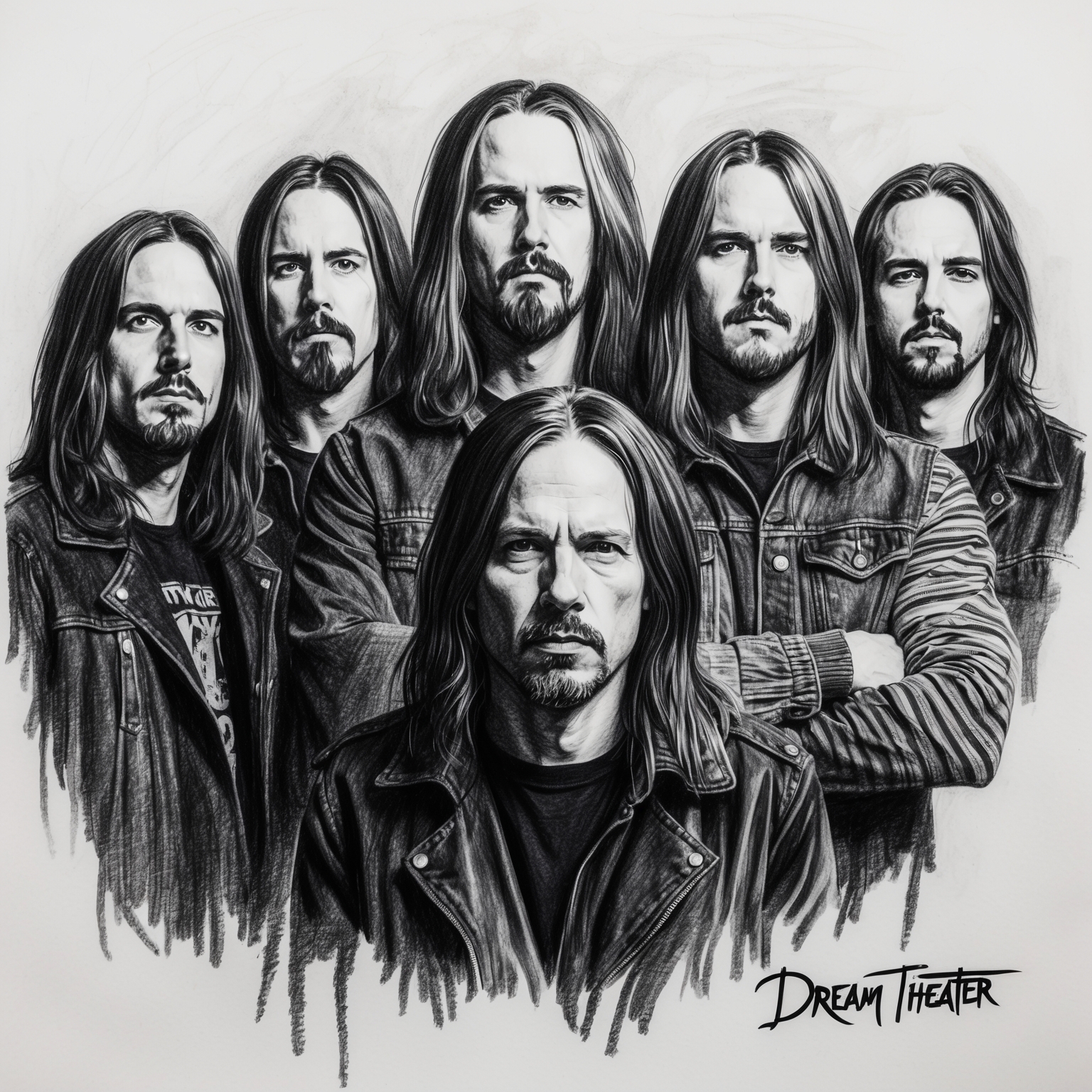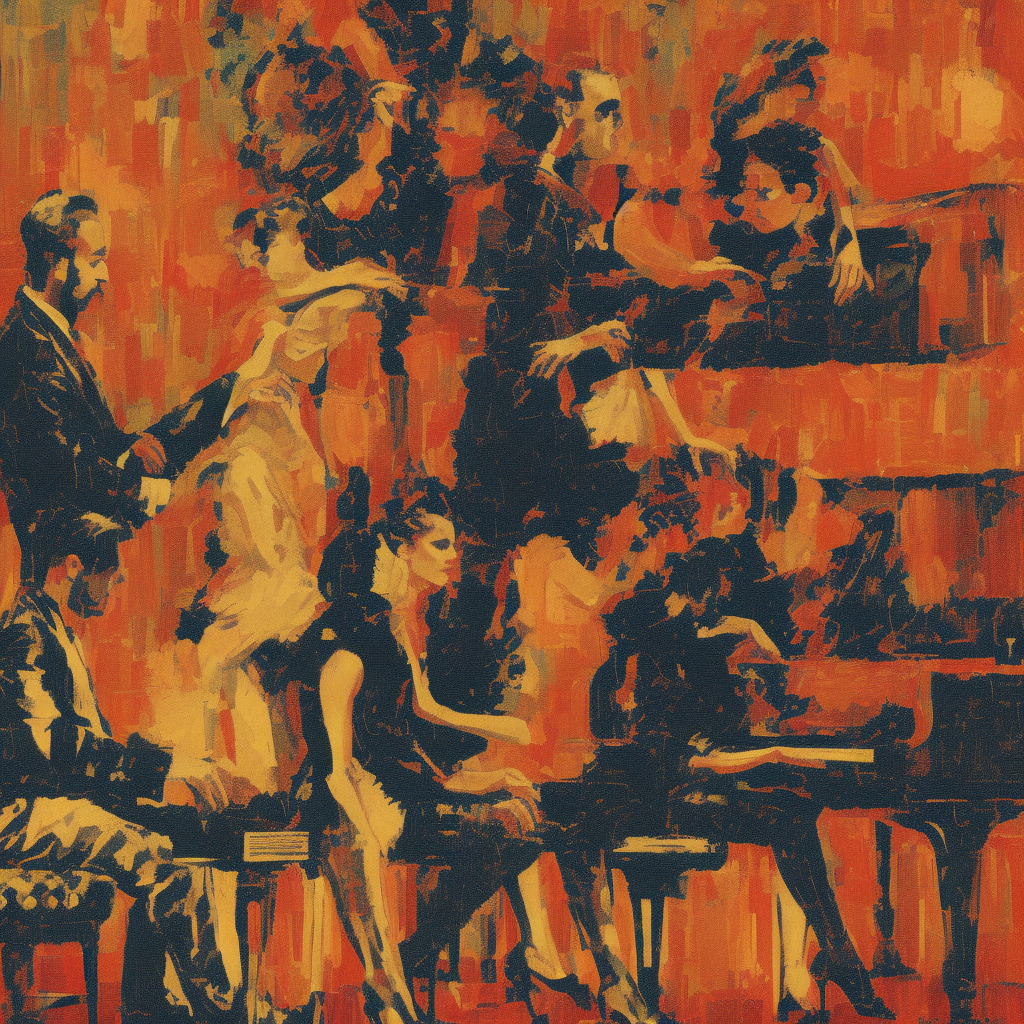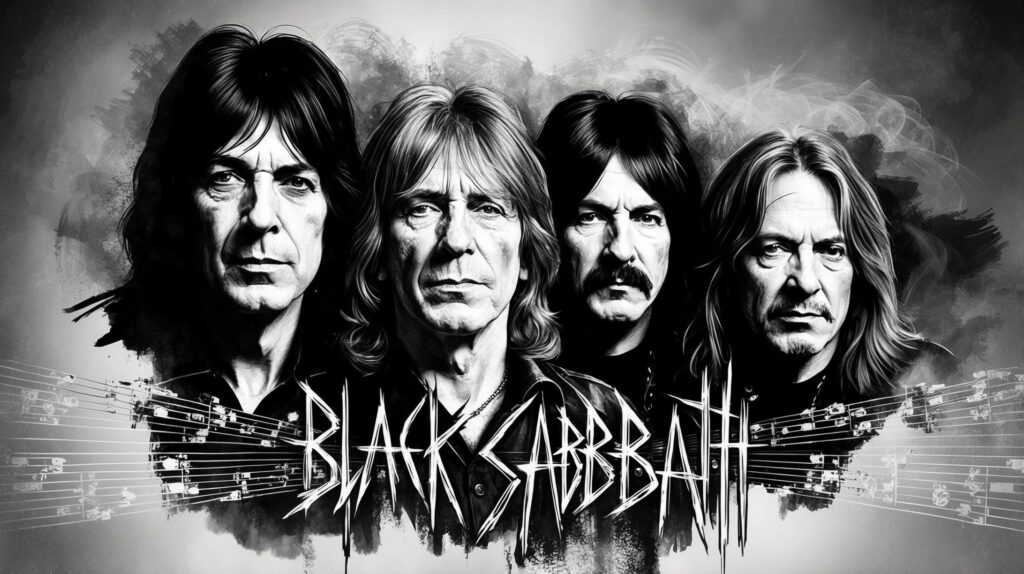Dream Theater: Pioneers of Progressive Metal
Dive into the world of Dream Theater, the progressive metal pioneers, and explore their iconic song ‘The Count of Tuscany’, which showcases their mastery in musical storytelling.

In the vast and intricate landscape of progressive metal, few bands stand as tall as Dream Theater. Known for their complex compositions and technical prowess, the band has carved out a legacy that has inspired countless musicians across the globe. ‘The Count of Tuscany,’ a cornerstone from their 2009 album ‘Black Clouds & Silver Linings,’ exemplifies the band’s mastery in storytelling through music. This epic track is not only a fan favorite but also a vital piece of Dream Theater’s artistic fabric, showcasing their ability to blend narrative depth with musical virtuosity.
Dream Theater’s journey began in the mid-1980s, when founding members John Petrucci, John Myung, and Mike Portnoy met at Berklee College of Music. Their shared passion for music led them to form a band originally named Majesty. Over the years, Dream Theater has seen its lineup evolve, with significant contributions from members like singer James LaBrie and keyboardist Jordan Rudess, each adding unique flavors to the band’s sound. By the time of ‘The Count of Tuscany’s’ release, the band had already made a significant impact on the progressive metal scene, with an array of albums showcasing their technical brilliance and emotive expression.
The era surrounding the release of ‘The Count of Tuscany’ was pivotal. In 2009, Dream Theater was deep into their exploration of thematic and sonic complexity, pushing the limits of what metal could encompass. The band’s longstanding collaboration and chemistry can be heard in every note of ‘The Count of Tuscany,’ which sees them weaving intricate musical passages with a storyline that draws listeners into an imaginative journey. This track reflects a mature phase in their career, as they integrated decades of experience into a cohesive and hauntingly beautiful work. Upon its release, the music scene was captivated by the ambition and scale of the project, underlining Dream Theater’s status as true innovators.
Crafting Musical Journeys: The Genius of John Petrucci
Explore the musical genius of John Petrucci, the composer behind ‘The Count of Tuscany,’ and discover how his unique style and collaborative efforts contributed to the song’s success.

John Petrucci, the mastermind behind ‘The Count of Tuscany,’ is a composer renowned for his exceptional guitar skills and intricate compositions. Born in 1967 in New York, Petrucci embarked on his musical journey at a young age, showing promise as a guitarist while growing up. He honed his skills at the Berklee College of Music, where he met his Dream Theater bandmates. His career is marked by a commitment to pushing the boundaries of progressive metal, both as a musician and composer.
Petrucci’s compositional style is deeply influenced by classical music, heavy metal, and rock. His work is characterized by intricate melodies, technical prowess, and an ability to weave complex narratives into his music. Influences like Steve Morse, Al Di Meola, and Yngwie Malmsteen are reflected in his playing and composition style, blending shredding guitar techniques with melodic sensibility. This fusion of styles makes his work distinct and compelling.
In the creation of ‘The Count of Tuscany,’ Petrucci not only composed its intricate music but also contributed to the songwriting, collaborating with lyricist and vocalist James LaBrie. His role was pivotal as he crafted the song’s distinctive guitar riffs and solos, which underscored the track’s epic feel. The interplay between lyrics and music in this track is seamless, with Petrucci’s compositions enhancing the storytelling facets of the song, making it one of Dream Theater’s standout pieces.
Honors, Covers, and Cultural Impact
While ‘The Count of Tuscany’ may not have formal awards, its impact and significance within progressive metal are celebrated by fans and musicians worldwide. Notably covered by enthusiasts, it finds recognition in the progressive community.

While ‘The Count of Tuscany’ by Dream Theater may not be widely recognized for its specific awards and accolades, its impact on progressive metal fans is undeniable. Known for its intricate musical composition and storytelling, the song has garnered a significant cult following. This popularity among fans can indirectly translate to accolades, as its detailed craftsmanship and epic narrative are often praised by critics and listeners alike in various music forums and publications.
In terms of official recognitions, Dream Theater, as a band, has been acknowledged numerous times in the realm of progressive metal, with ‘The Count of Tuscany’ being a part of that broader legacy. The song itself is often highlighted in fan polls and lists of top progressive metal songs, showcasing its enduring influence in the genre.
Notably, the song has inspired numerous covers and interpretations by other musicians. From amateur guitarists to professional cover bands, ‘The Count of Tuscany’ has been a challenging yet rewarding piece to tackle. These covers are frequently shared on platforms like YouTube, where fans exhibit their admiration for Dream Theater’s intricate work. While it may not be featured in movies, TV shows, or video games, the song’s presence in the collective consciousness of the progressive genre speaks volumes about its significance.
Navigating the Chart Waves with “The Count of Tuscany”
Exploring the chart journey of “The Count of Tuscany,” we delve into its niche success as a beloved fan favorite rather than a mainstream hit. This track, rooted in progressive metal, highlights Dream Theater’s enduring artistry and the unique marketing strategies behind their album’s success.

Released as part of Dream Theater’s epic 2009 album Black Clouds & Silver Linings, “The Count of Tuscany” is often touted as a masterpiece among fans, though it didn’t blaze through the mainstream charts in the way some singles do. Despite its 19-minute runtime, which deviates from the typical radio-friendly format, the song has carved a niche for itself in the progressive metal community. Initially, the album itself did quite well, reaching the 6th spot on the Billboard 200, marking one of the highest debuts for the band. However, the song as an individual entity didn’t break into mainstream charts, largely due to its unconventional length and complexity.
The reception of “The Count of Tuscany” provides insight into Dream Theater’s storied career, where they’ve maintained a steady cult following rather than seeking fleeting commercial stardom. Their ability to consistently engage a dedicated audience speaks volumes about their unique position in the music industry. This particular track became more of a celebrated gem among long-time fans rather than a chart-topping hit, signifying a successful integration into the band’s legendary discography rather than a breakthrough moment.
From a marketing standpoint, the song wasn’t heavily pushed as a single, owing to its length. The entire album benefited from strategic promotions, including exclusive content for fans and expansive touring, which consistently drew large crowds. While “The Count of Tuscany” itself may not have climbed the charts, its importance within the album, alongside critical and fan appreciation, solidifies its place as a significant work in Dream Theater’s legacy.
Exploring the Visual Realm of ‘The Count of Tuscany’
With no official music video, ‘The Count of Tuscany’ finds visual representation in fan-made videos and live performances, which capture the song’s epic nature and expand its narrative appeal.

Dream Theater’s ‘The Count of Tuscany’ does not have an official music video, yet its expansive narrative and evocative themes have inspired a plethora of fan-made videos available on platforms like YouTube. These interpretations frequently blend imagery with live footage, and some even include artwork and animations that capture the essence of the song’s storytelling. This grassroots approach allows fans to express their appreciation for the song by creating their own visual tributes.
The live performances of ‘The Count of Tuscany’ are notable, given the band’s reputation for delivering concerts with intricate visual effects. Dream Theater’s concerts often employ lavish lighting and projected imagery that enhance the song’s dramatic and narrative elements. Fans fortunate enough to attend these shows have experienced the spectacle of the music brought to life, making these live versions a cornerstone of the song’s enduring popularity.
Reception to these fan and live efforts has generally been positive within the Dream Theater community. Fans appreciate the creative endeavors that seek to visually represent the epic nature of the track. While professional critics may not have widely discussed these videos, the enthusiasm and engagement with the song on visual platforms demonstrate its impactful reach beyond just audio.
Delving into the Complex Symphony of ‘The Count of Tuscany’
Explore the intricate musical structure of Dream Theater’s ‘The Count of Tuscany,’ a progressive metal epic known for its elaborate composition, dynamic rhythms, and virtuosic instrumentation.

Dream Theater’s ‘The Count of Tuscany’ is a masterclass in progressive metal, featuring a complex and intricate musical structure that is both ambitious and captivating. The song spans over 19 minutes, allowing the band to explore a variety of musical themes and transitions, typical of their signature style. Written in E minor, the track utilizes adventurous chord progressions and tempo changes that keep listeners engaged throughout its extensive runtime.
The song opens with a melodic guitar intro that sets a haunting yet captivating tone. The band employs odd time signatures, a staple in their music, to create an unpredictable rhythm section. Each section of the song seamlessly flows into the next, showcasing the band’s prowess in constructing elaborate musical landscapes. The tempo ranges from slow, reflective passages to intense, high-energy sections, drawing the listener into a dynamic auditory journey.
The instrumentation is rich and varied, with John Petrucci’s virtuosic guitar work leading the charge. The keyboards, played by Jordan Rudess, add layers of depth with symphonic textures, while Mike Portnoy’s drumming provides a robust rhythmic backbone. The bass and vocals contribute to the song’s rich harmonic structure, delivering powerful and evocative melodies. This composition sits at a pivotal point in Dream Theater’s discography, representing both a culmination of their earlier progressive experiments and a precursor to their continued evolution. In contrast to their previous work, this song demonstrates a matured approach to thematic complexity and a polished sound.
Delving into the Tales of Intrigue and Unease
Analyze the lyrics of ‘The Count of Tuscany’ as they weave a narrative filled with mystery and suspense, using vivid imagery and literary devices to enhance the storytelling.
In a foreign town
Far away from home
I met the Count of Tuscany
A young eccentric man
Bred from royal blood
Took me for a ride
Across the open country side
Get into my car
Let’s go for a drive
Along the way I’ll be your guide
Just step inside
Maybe you recall
A cannibal curator
A character inspired by my brother’s life
Winding through the hills
The city far behind
On and on we drove
Down narrow streets and dusty roads
At last we came upon
A picturesque estate
On sprawling emerald fields
An ancient world of times gone by
Let me introduce
My brother
A bearded gentleman
Historian
Sucking on his pipe
Distinguished accent
Making me uptight
No accident
I want to stay alive
Everything about this place just doesn’t feel right
I, I don’t want to die
…
******* This Lyrics is NOT for Commercial use *******

The lyrics of “The Count of Tuscany” by Dream Theater take listeners on a vivid narrative journey, weaving together themes of intrigue, mystery, and existential anxiety. The story unfolds from a first-person perspective, immersing the audience into an eerie adventure where reality blurs with fiction. The protagonist’s encounter with the enigmatic Count creates a tapestry of suspense and curiosity, setting the stage for an introspective experience. This narrative approach not only captivates the listener but also pushes the boundaries of traditional storytelling within music.
One of the most compelling aspects of the lyrics is the use of literary devices. The song employs metaphor and vivid imagery, painting a picture of a foreign land and a mysterious guide, evoking a sense of wonder and danger. The lyrical phrases such as ‘winding through the hills’ and ‘sprawling emerald fields’ enrich the listening experience, allowing the audience to visualize the journey along with the protagonist. Additionally, the element of a classic Gothic narrative—the mysterious estate, the fear of unknown dangers—enhances the song’s allure and deepens its narrative complexity.
The song’s lyrics also engage in intercultural storytelling, which may draw inspiration from literature or classic cinema, invoking the timeless trope of an ominous host. Fans have speculated about possible influences from gothic novels and mysterious thrillers, adding layers of interpretation to the lyrics. Furthermore, these themes may resonate with those listeners who relish a story that is rich in suspense and psychological exploration. The emotional impact is profound, as it explores the protagonist’s fear and desire to escape, tapping into universal human emotions of uncertainty and survival.
🎸 Did you know? Dream Theater’s epic The Count of Tuscany was inspired by a real-life trip to Italy! 🚗🇮🇹 Embark on a 19-min musical adventure! #DreamTheater #ProgMetal #MusicTrivia #TheCountOfTuscany 🎶 tinyurl.com/yc3jpsh5
Click to Tweet







